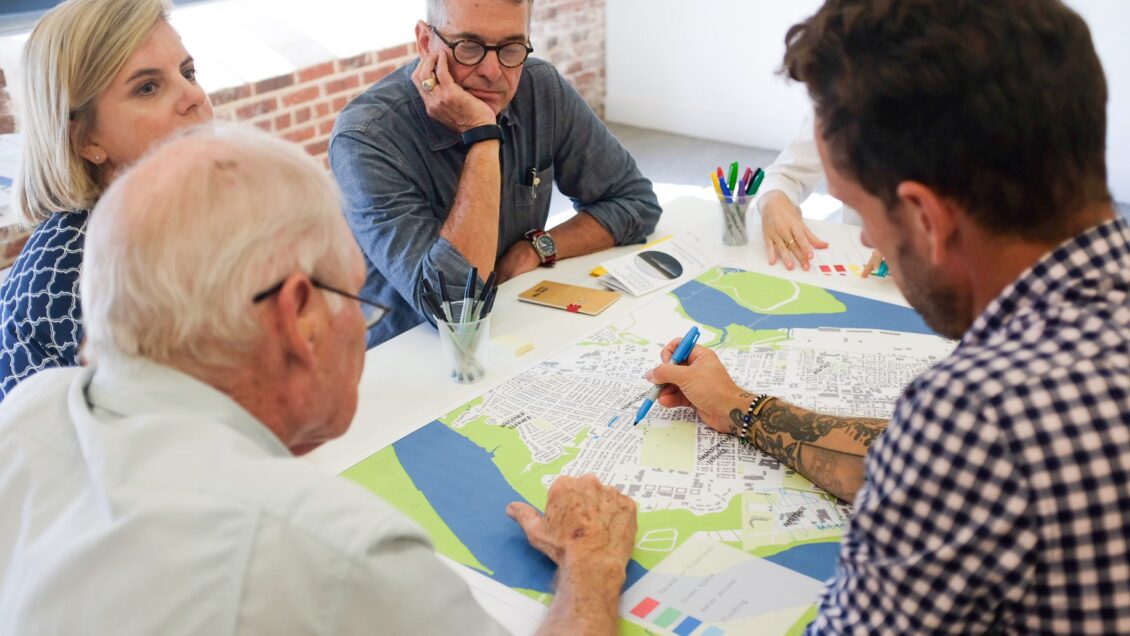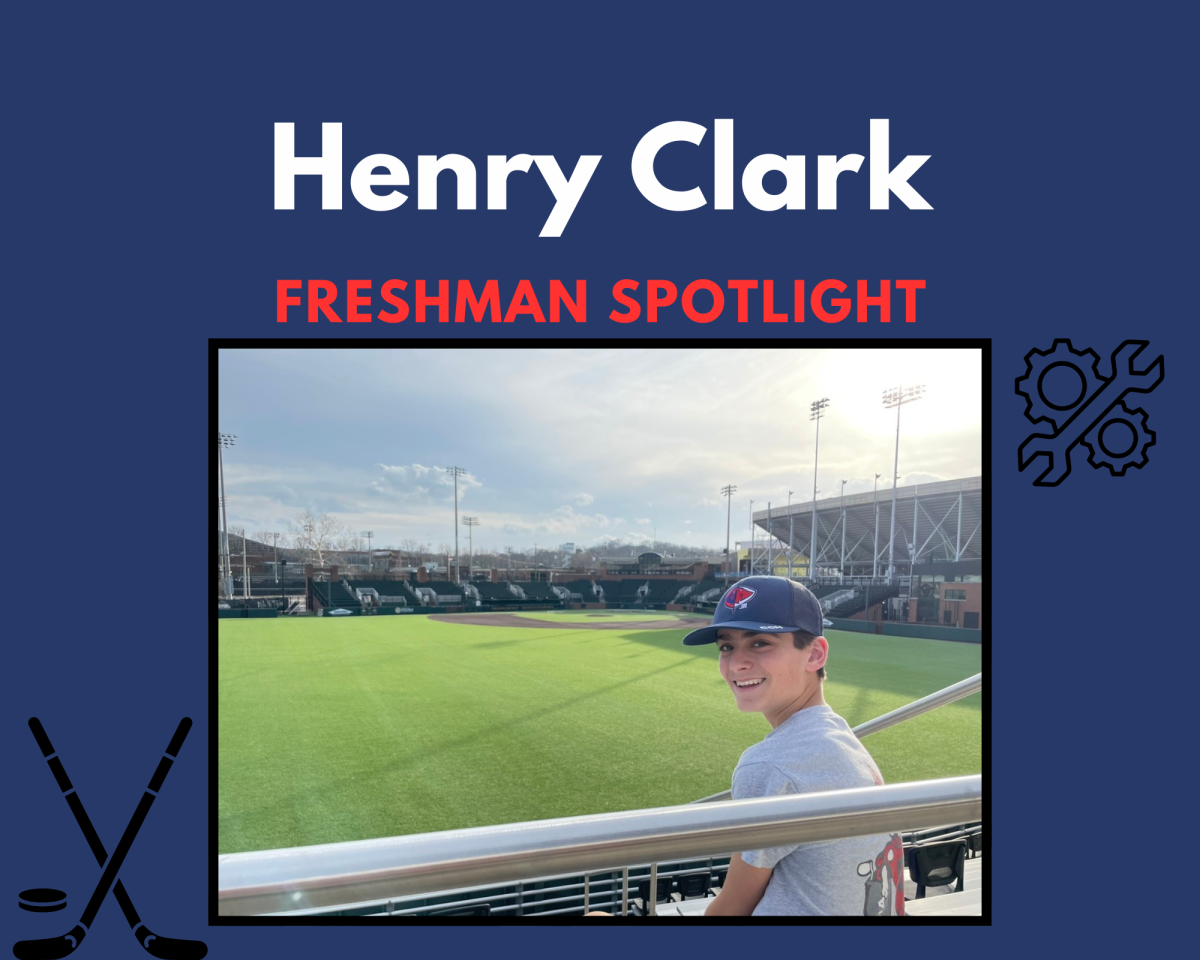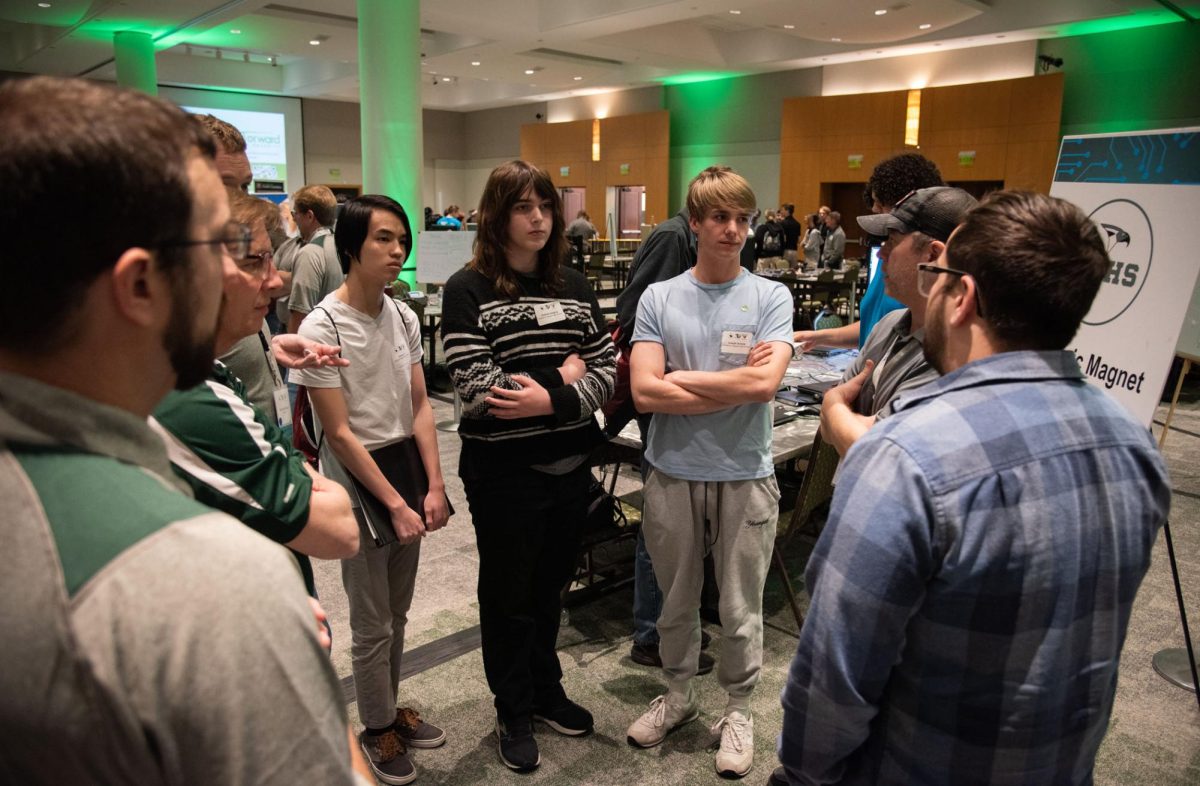South Carolina infrastructure has had a major impact on the environment both good and bad. A recent project at Clemson is working to do more for the better. The Clemson Master of Resilient Urban Design program came together with the Marsh Appreciation and Restoration Society for Happiness project to begin planning an “urban ecological corridor” around Halsey’s Creek.
Within the Cigar Factory in Downtown Charleston, is the Clemson Design Center. An odd idea for a college center to be so far from its campus, but they make it work. Charleston is a center for urbanism, so by having their school of architecture partially stay here allows them to gain hands-on experience with urban cities. They also get to witness our unique mix of history, culture, tourism, urbanism, and ecosystem. This is where students of the Master of Resilient Urban Design (MRUD) program spend their time learning. This program seeks to give architecture students the skills to adapt to an ever changing city and preserve humanities and sciences as the world is faced with climate change. A majority of the course load is “studio.” This is where students design solutions to real world problems in the Lowcountry and create presentations for the general public. The idea is to create real experience that can lead to better jobs and demonstrate the real mix of history, people, and environment that comes with planning a city.
The Marsh Appreciation and Restoration Society for Happiness (M.A.R.S.H.) project is a non-profit organization in Charleston working to tackle the ecological crisis happening in our waterways. They organize clean-ups, informational lectures, planting, and partner with local businesses to expand their impact. They are also part of the Carolina Ocean Alliance which is a network of conservation organizations that interact and help each other. They focus on local solutions by local people. They have book clubs, conferences, and festivals all in the name of ocean conservation.
An ecological corridor is a designated green area that seeks to reconnect wildlife that has been separated by human interference. This helps expand biodiversity, allows for animal migration, increases the genetic pool, and protects animal and plant populations. Some animals live full time in these corridors, normally smaller animals and plants, so these strips of land have to contain enough resources to sustain them. Most other animals use the areas to migrate through, to disperse juveniles, or to move across their home range. These areas still face threats especially if the spaces are “stepping-stones” where it is just small patches of land or if there is no buffer zone. This allows urban areas to still encroach on the natural land.
Clemson’s Master of Resilient Urban Design is looking to create an ecological corridor around Halsey’s Creek which is a little north of the Citadel and Hampton Park. On October 2nd, students and the M.A.R.S.H. Project came together with the City of Charleston staff, architects, and city planners to discuss plans for the design. The students created methods to collect data and sketched plans that faced scrutiny from the community. They led participants to map their daily transit and brainstorm ways to protect water around that path. They got the local community together to plan their own solutions and receive feedback. By seeing the ideas of the locals, the MRUD students can better plan their solutions to the pollution in our waterways. The ecological corridor will also create a space for the community for research and a place to reflect and destress.
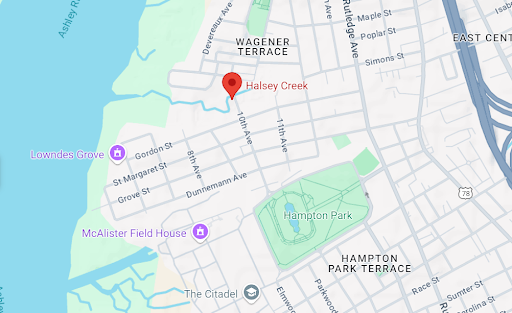
This is not the only plan that Clemson’s MRUD program has been working on. Charleston has been torn apart for almost 200 years with the building of the first Railroad in South Carolina. After that, Charleston continued to become separated with the creation of Interstate 26. This abandoned railroad track underneath the I-26 overpass has been a problem for city leaders. In 2020, the city approved plans to build a 40-acre park that would stretch from Mount Pleasant to Marion Square. In 2023, MRUD
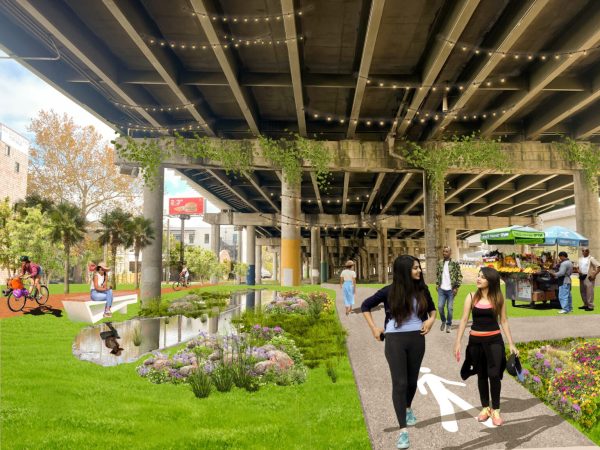
students were each given a piece of the park to plan and design creative solutions. In one area, water creates an undesirable area to be around. Water causes many problems for transportation and flooding. The student tasked with the area decided he wanted to “work with the water rather than against the water.” His final solution was to create “raingardens” with native plants that would reduce flooding and make the area visually appealing. They would also work to filter the water reducing pollution. This is not the only challenge students had to face. They also had to fight back against gentrification and mitigating crime. Paths and bike lanes would connect surrounding neighborhoods, but lighting would pose a challenge to keep the areas safe. Due to the emotional effect they bring, a student chose to use string lights to make the area friendlier. All of these ideas would take years to create, so students have also worked to make immediate solutions. Some of those proposed are having pop-up retail areas and more events in this area to begin to create a more inviting space.
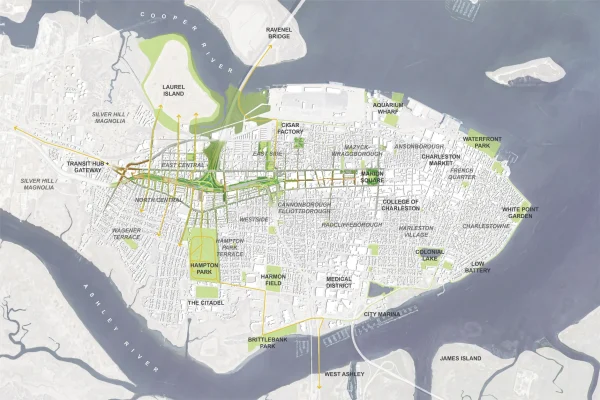
The environment in Charleston is a persistent issue that will not be fixed immediately or even by just these projects. It will take a long time and a lot of work to create a healthy balance between urban and environment. These projects and Clemson’s Master of Resilient Urban Design programs are amazing ways to start creating solutions and get community feedback. If we continue to keep an open-mind and support programs like M.A.R.S.H. we can begin to make change. I hope that these students’ plans come to fruition and we can see more green spaces in our Downtown areas.



